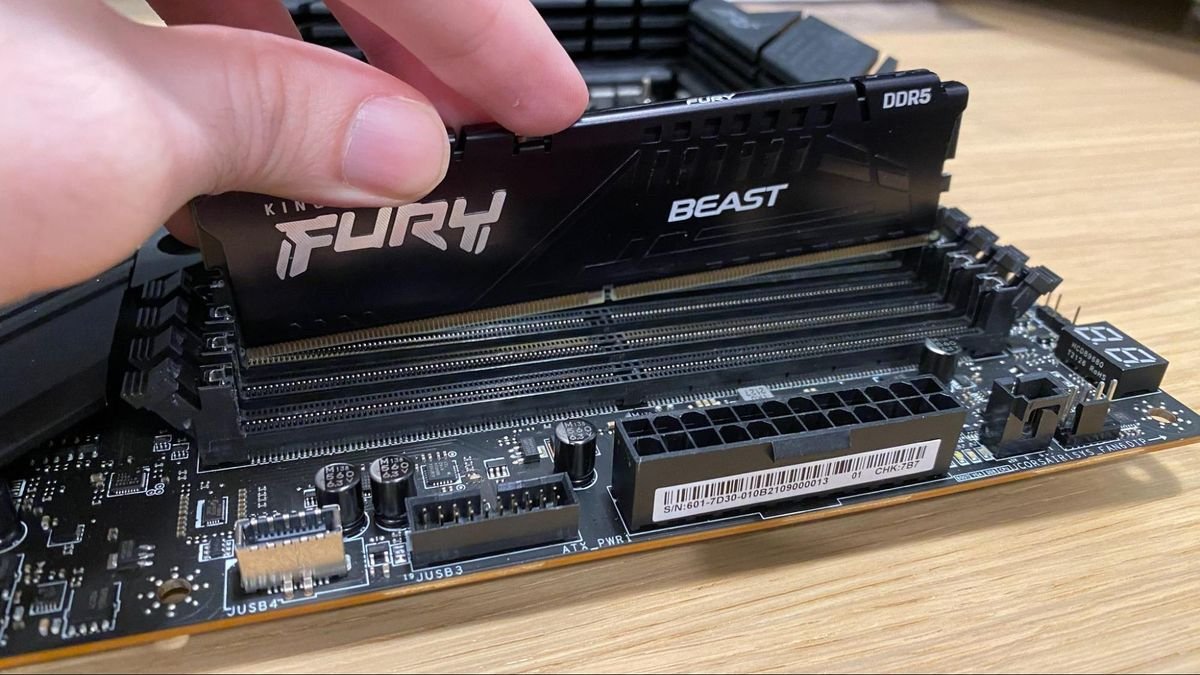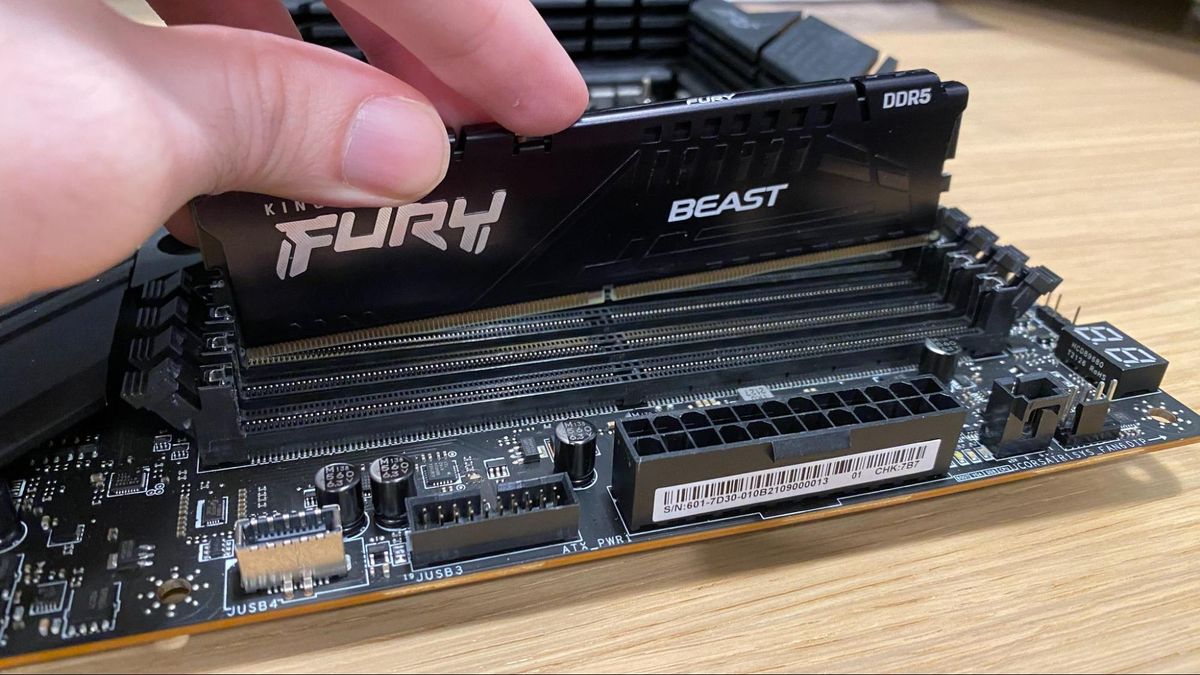Enabling XMP or Extreme Memory Profile is a simple yet powerful and effective way to maximize RAM performance and ensure you get the most out of your hardware. By default, motherboards run most RAM at slower than rated speeds, which means you won’t be able to use it to its full potential.
Whether you’re a gamer looking for improved frame rates or a professional working on memory-intensive tasks, enabling XMP can help you unlock faster speeds and improve system responsiveness. In this guide, we’ll walk you through how to enable XMP and unlock the true power of your RAM by making a few tweaks in the BIOS.
What is XMP?
XMP is a technology developed by Intel that allows users to easily Overclocking Configures RAM for a given RAM package by loading the predefined memory profile specified for it. These profiles contain optimized settings for RAM speed, timing, and voltage, which are automatically applied without the need to manually adjust each parameter.
Modern RAM modules, especially those aimed at gamers or enthusiasts, often come with XMP profiles that allow them to run at higher speeds than their default settings. By default, when you install RAM in your system, the motherboard will run the memory at standard speeds, depending on your motherboard and processor. Without enabling XMP, you won’t get the full performance RAM can offer.
Although XMP was originally developed for Intel systems, many AMD motherboards also support XMP or similar EXPO (Extended Overclocking Profile) or DOCP (Direct Overclocking Profile) for newer AM5 CPUs. These effectively provide the same functionality to AMD systems, allowing them to take advantage of higher memory speeds with just a few clicks and tweaks.
Why enable XMP?
When you purchase performance-oriented, high-speed RAM (such as 6000 MHz, 6400 MHz, or higher), the RAM will not automatically operate at those speeds when installed. Enabling XMP lets you take full advantage of the high-speed RAM you purchased without having to manually adjust complex settings such as frequency, voltage, or timing. Here are some benefits of enabling XMP:
- Improved performance: RAM with higher frequencies (or MT/s, short for megatransfers per second) allows for faster data transfers, reducing bottlenecks and improving overall system responsiveness, especially in tasks such as gaming, video editing, and 3D rendering.
- Automatic configuration: XMP simplifies the overclocking process by providing pre-configured profiles, making it easier for less technical users (or technical users who just want to save time) to increase memory performance.
- Optimize system stability: Because XMP profiles are designed and tested by the manufacturer, they are generally more stable and reliable than manually adjusting memory settings, which can cause crashes or instability.
Without XMP, you basically give up performance. While the difference in speed per task may not always be huge, certain applications such as gaming, video editing, and multitasking can significantly benefit from increased memory bandwidth.
Some XMP kits push the performance edge, so they won’t be stable on all processors – you’ll need to get lucky in the silicon lottery to get higher speeds. Conduct research to determine whether XMP profiles fall into the “safe” range that nearly every processor can support. These cutting-edge kits often come with eye-watering price tags.
Step-by-step guide to enabling XMP
1. Enter BIOS/UEFI
To enable XMP, you need access to your system’s BIOS (Basic Input/Output System) or UEFI (Unified Extensible Firmware Interface). This is system-level software that controls hardware settings. Restart your computer and immediately begin pressing the BIOS key, which varies by motherboard manufacturer, but is usually Delete, F2, F10, or Esc. If you can’t figure it out, see our feature How to enter the BIOS on any PC.
You can also find the correct key by consulting the motherboard manual or paying attention to the on-screen prompts during the boot process, which usually say “Press [Key] Enter settings.
Once you enter the BIOS interface, you will see a menu with options for controlling various hardware components. Modern UEFI systems typically have user-friendly graphical interfaces, while older BIOS versions may look more basic and have text-based interfaces.
2. Navigate to Overclocking or Memory Settings
Once in the BIOS, you need to find the section that manages memory or overclocking settings. The exact names and locations of these settings depend on your motherboard manufacturer, but some common terms you should look for include: Overclocking, AI Tweaker, Extreme Tweaker, Advanced Memory Settings, DRAM Configuration, and more.
In some UEFI interfaces, there may be a search function that can help you find these settings more easily. Once you find the appropriate section, you should see options for RAM speed, timing, and voltage.
3. Enable XMP profile
You’ll find the option to enable XMP in the memory or overclocking settings. This setting may be listed under XMP (Extreme Memory Profile) or, for AMD motherboards, DOCP (Direct Overclocking Profile) or EXPO (Extended Overclocking Profile).
Next, select Profile 1, which is generally the most stable and common XMP profile. This profile usually matches your RAM’s advertised speed, voltage, and timings. For example, if you purchased 6000MHz RAM, Profile 1 might configure the memory to run at 6000MHz.
Some systems may offer Profile 2, which allows for more aggressive overclocking, but may not always be as stable as Profile 1. should only be used. Once selected and saved, your system will automatically adjust the memory settings to the optimized values stored in the XMP profile.
4. Save and exit BIOS
After selecting the desired XMP profile, you need to save the changes and exit the BIOS. Navigate to the Save and Exit menu (usually accessed by pressing the F10 key) or find it in the BIOS menu options. Confirm you want to save changes. Your system will restart and apply the new settings.
At this point, your RAM should be running at its optimized speed, voltage, and timing according to the XMP profile.
5. Verify that XMP is enabled
To verify whether XMP is enabled on a Windows system, you can use built-in tools and third-party software. First check RAM speed using Windows Work Administrator. Although it won’t explicitly show whether XMP is enabled, it will show the current speed of your memory.
To do this, right-click on the taskbar and select Task Manager. Once it opens, click the Performance tab and select Memory from the left sidebar. In the Speed section, you will see the current speed of your RAM. If the speed matches the advertised RAM speed, XMP is enabled.
Another way to verify XMP is through CPU-Z, a free software that provides detailed information about the system’s hardware components. If you have not already downloaded and installed the program, please download and install the program first. Once installed, launch CPU-Z and navigate to the Memory tab at the top of the window. This section provides detailed information about system memory, including active XMP profiles. Look for the “XMP” tag in the memory timings to confirm that the profile is enabled. You can also compare the current memory speed listed under DRAM Frequency to the rated XMP speed in the memory specifications to ensure that the profile is applied correctly.
If you’re still unsure, you can always check your system’s BIOS directly. Restart the computer and access the BIOS menu, then navigate to the Memory or Overclocking section to confirm that XMP is enabled and the profile is active.
Troubleshooting Tips
After enabling XMP you may experience system instability, such as crashes or random reboots. If this happens, the first step is to switch from Profile 2 to Profile 1, as Profile 2 often pushes the RAM to higher frequencies which may be unstable. If the problem persists, another method is to manually increase the RAM voltage slightly in the BIOS. Increasing voltage can sometimes stabilize memory performance, but be careful. Excessive voltage can damage components, so proceed only if you are familiar with the BIOS settings and understand the risks involved.
Another possible fix is to update the motherboard’s BIOS. Often, XMP-related problems stem from an outdated BIOS that does not fully support the specific RAM package you are using. Manufacturers regularly release updates to improve compatibility, so visit your motherboard’s website to check for the latest BIOS version, and follow their instructions for updating. BIOS updates usually resolve compatibility issues and allow XMP to run without additional problems.
If you don’t see the XMP option in your BIOS, the problem may be that your motherboard or RAM is incompatible with XMP. In this case, you can manually configure memory settings such as timing, speed, and voltage in the BIOS. This manual method requires more technical knowledge as it involves adjusting settings normally handled by XMP profiles. It’s also unlikely to provide the same stability as the official XMP profile, so this option is best for advanced users familiar with BIOS level adjustments. For more information, see our feature How to Overclock DDR5 Memory.

